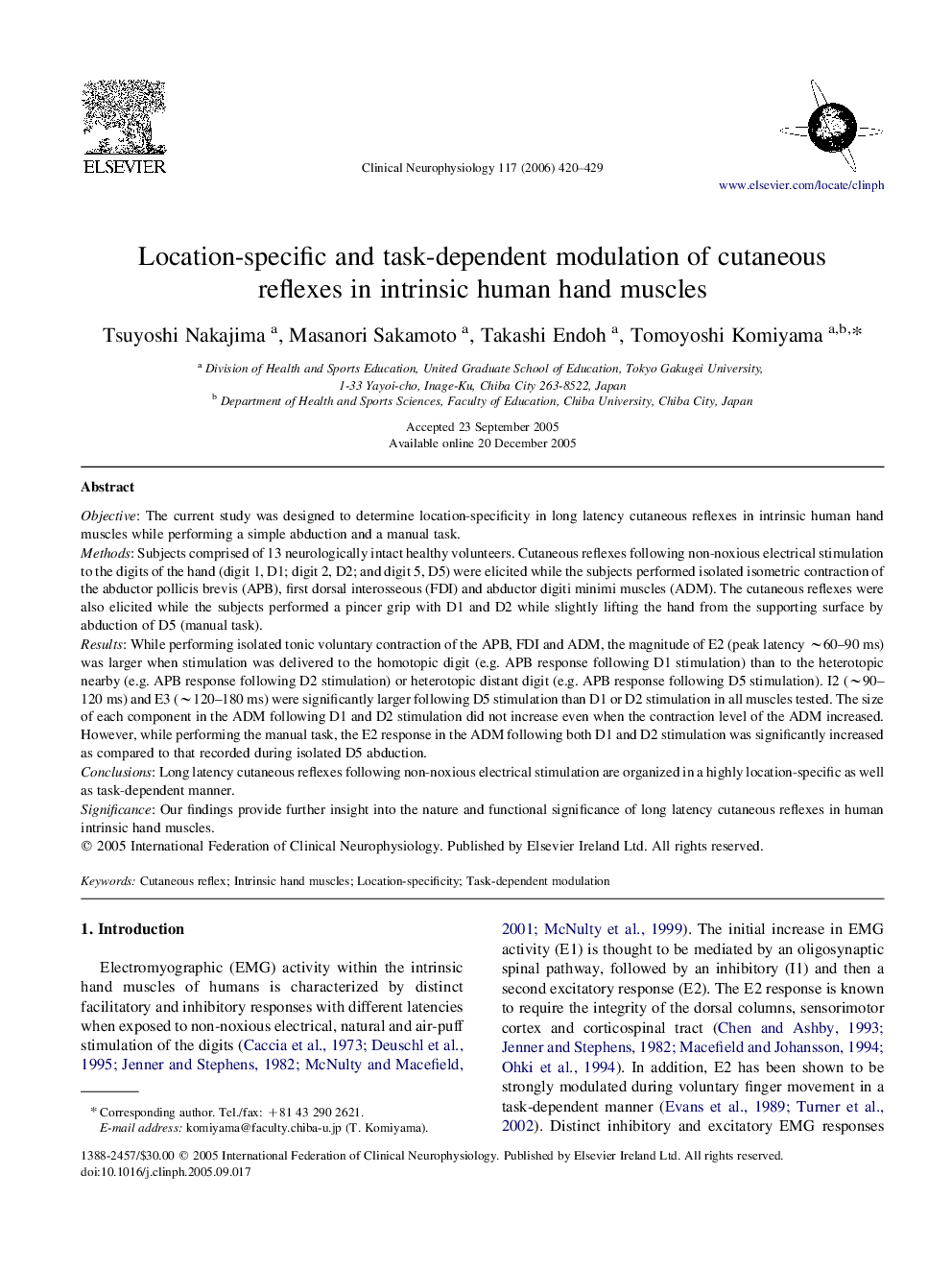| Article ID | Journal | Published Year | Pages | File Type |
|---|---|---|---|---|
| 3048149 | Clinical Neurophysiology | 2006 | 10 Pages |
ObjectiveThe current study was designed to determine location-specificity in long latency cutaneous reflexes in intrinsic human hand muscles while performing a simple abduction and a manual task.MethodsSubjects comprised of 13 neurologically intact healthy volunteers. Cutaneous reflexes following non-noxious electrical stimulation to the digits of the hand (digit 1, D1; digit 2, D2; and digit 5, D5) were elicited while the subjects performed isolated isometric contraction of the abductor pollicis brevis (APB), first dorsal interosseous (FDI) and abductor digiti minimi muscles (ADM). The cutaneous reflexes were also elicited while the subjects performed a pincer grip with D1 and D2 while slightly lifting the hand from the supporting surface by abduction of D5 (manual task).ResultsWhile performing isolated tonic voluntary contraction of the APB, FDI and ADM, the magnitude of E2 (peak latency ∼60–90 ms) was larger when stimulation was delivered to the homotopic digit (e.g. APB response following D1 stimulation) than to the heterotopic nearby (e.g. APB response following D2 stimulation) or heterotopic distant digit (e.g. APB response following D5 stimulation). I2 (∼90–120 ms) and E3 (∼120–180 ms) were significantly larger following D5 stimulation than D1 or D2 stimulation in all muscles tested. The size of each component in the ADM following D1 and D2 stimulation did not increase even when the contraction level of the ADM increased. However, while performing the manual task, the E2 response in the ADM following both D1 and D2 stimulation was significantly increased as compared to that recorded during isolated D5 abduction.ConclusionsLong latency cutaneous reflexes following non-noxious electrical stimulation are organized in a highly location-specific as well as task-dependent manner.SignificanceOur findings provide further insight into the nature and functional significance of long latency cutaneous reflexes in human intrinsic hand muscles.
